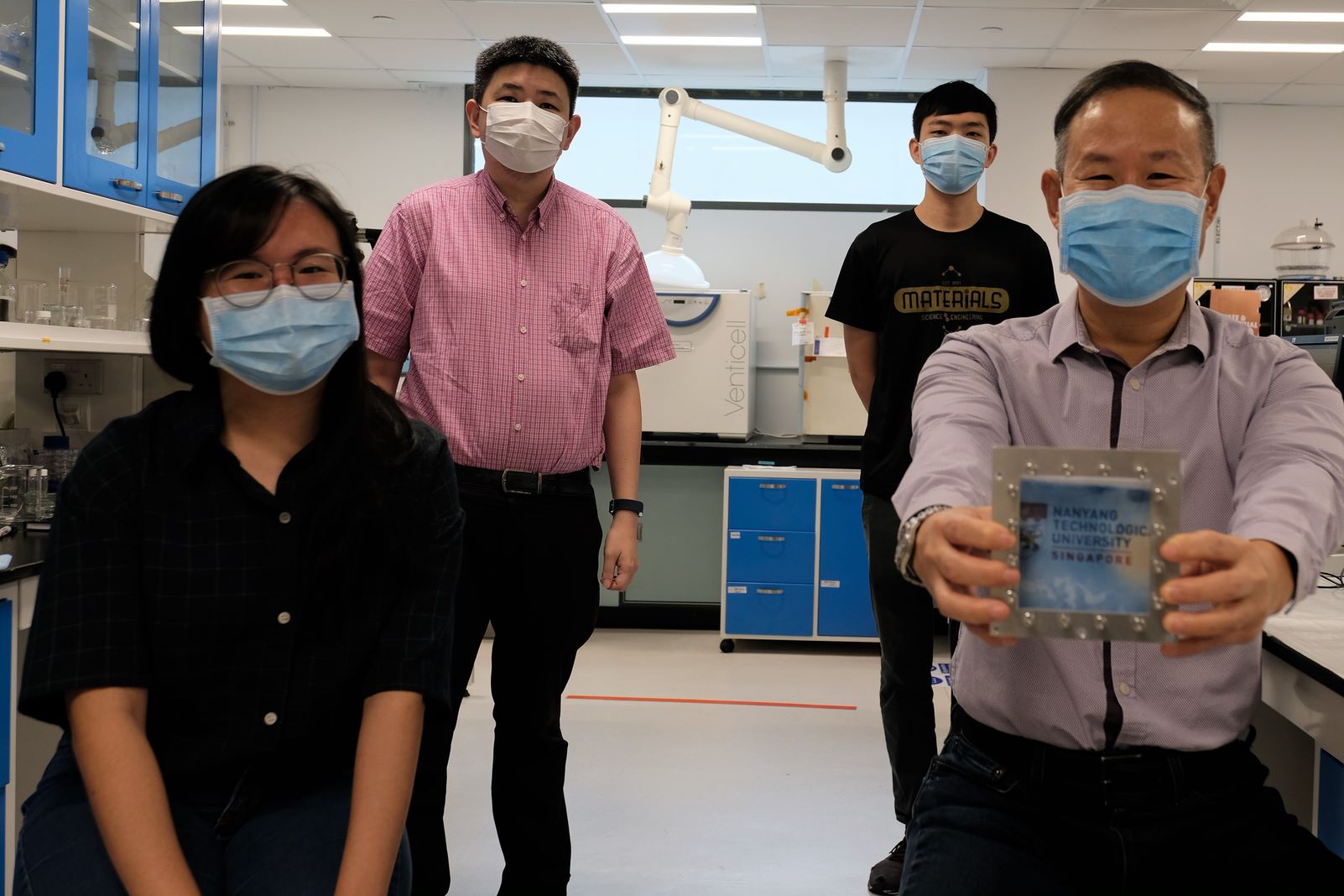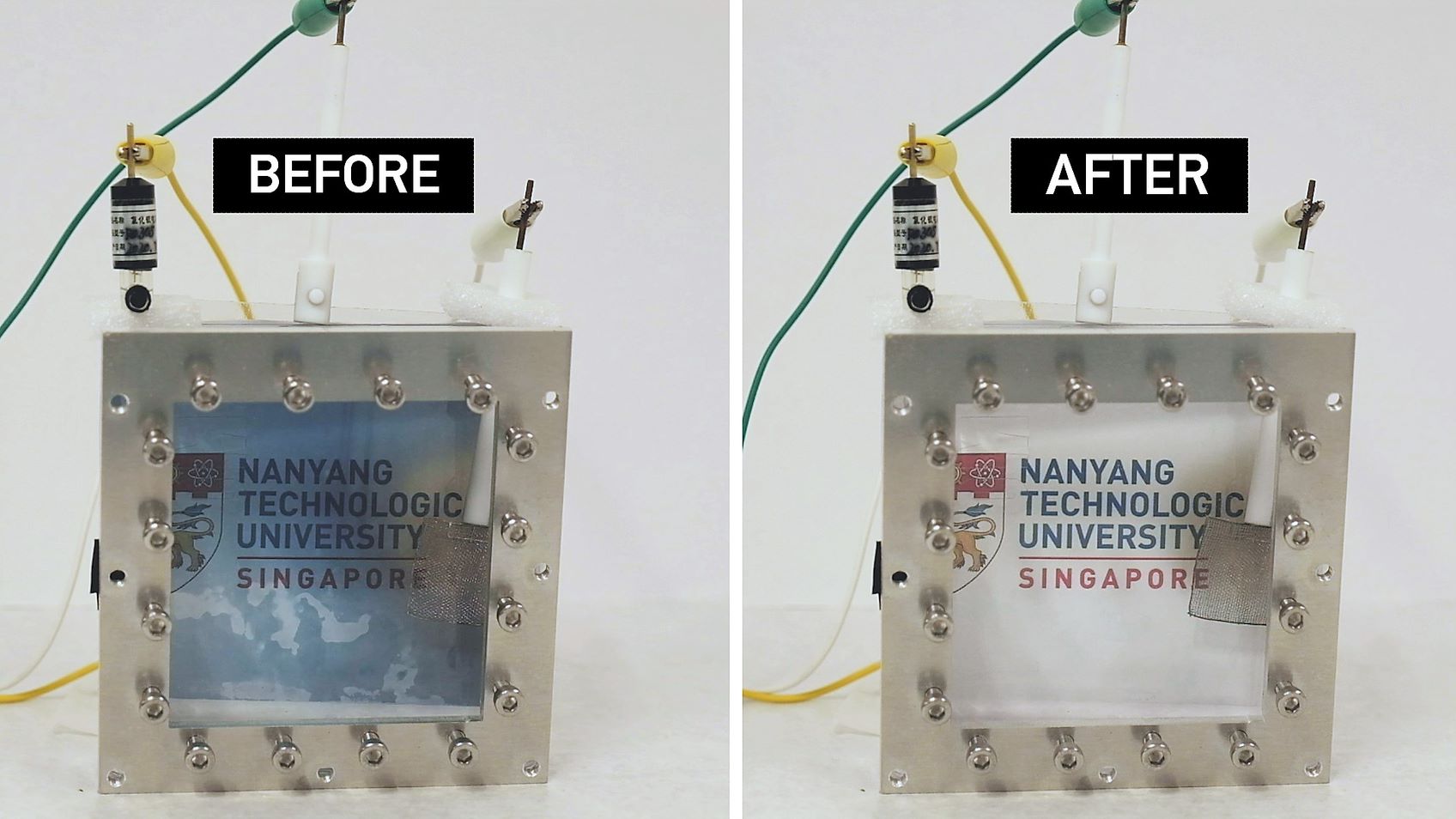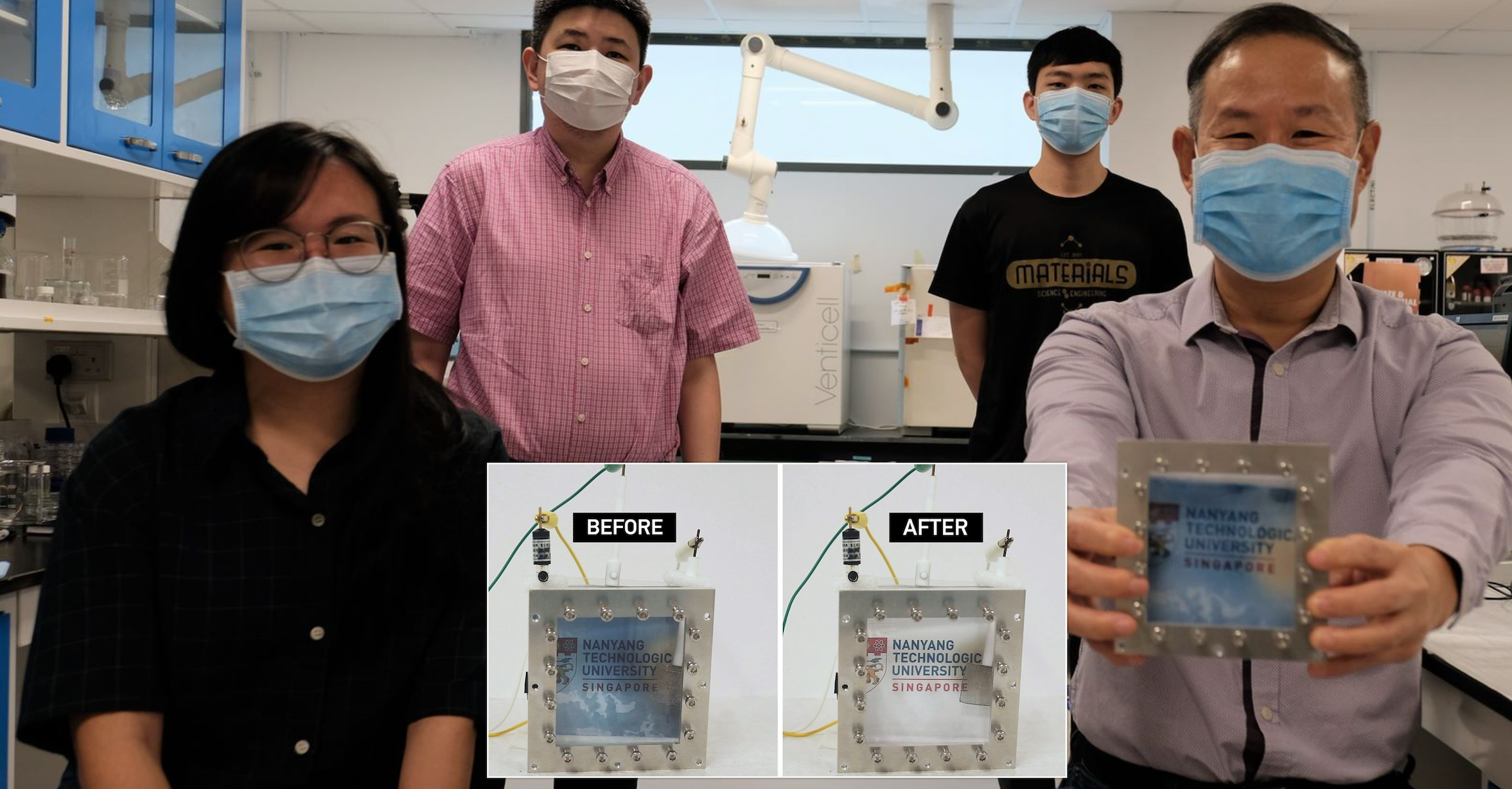Follow us on Telegram for the latest updates: https://t.me/mothershipsg
Scientists from Nanyang Technological University Singapore (NTU), leading an international research team, have invented a "smart" window material that controls heat transmission with a flick of the switch.
The new technology can block out up to 70 per cent of the heat coming in, without blocking the view.
 Photo via NTU Singapore
Photo via NTU Singapore
What it's made of
The material has a specifically designed nanostructure and comprises materials like titanium dioxide (TiO2), tungsten trioxide (WO3), neodymium-Niobium (Nd-Nb), and tin (IV) oxide (SnO2).
How it works
Made for electrochromic (EC) windows, the material needs to be coated onto glass window panels and activated by electricity.
When switched on, the product is able to block infrared radiation—the major component of sunlight that emits heat.
According to NTU, experimental simulations have shown it to be effective in blocking up to 70 per cent of infrared radiation, while allowing up to 90 per cent of visible light to pass through.
 Photo via NTU Singapore
Photo via NTU Singapore
Alfred Tok, Associate Professor from the School of Materials Science and Engineering, explained,
"By incorporating the specially designed nanostructure, we enabled the material to react in a ‘selective’ manner, blocking near infrared radiation while still allowing most of the visible light to pass through whenever our electrochromic window is switched on."
How it compares
The electrochromic windows that are typically used in "green" buildings work by becoming tinted when in use, reducing light from entering the room.
However, they are only effective in blocking visible light, and not infrared radiation.
This means heat continues to pass through the window and warm up the room.
In comparison, the new material is about 30 per cent more effective in regulating heat than commercially available electrochromic windows, and is cheaper in the long run due to its durability.
The research team said that the technology may also help conserve energy that would be used for the heating and cooling of buildings, contributing to the future design of sustainable green buildings.
The next step
The team has plans to improve the product by also controlling conducted heat (heat from the external environment), in addition to infrared radiation.
This will be done so through a patented switch system, which comprises magnetic carbon-based particles and thin films that are good conductors of heat.
When switched on, heat will be allowed to pass through the window. When turned off, conducted heat cannot transfer through.
By integrating this system with the new electrochromic material, the smart window is expected to be particularly useful in temperate climates as it can regulate heat loss or gain according to the needs of the changing seasons, Ronn Goei, Senior Research Fellow at the NTU School of Materials Science and Engineering said.
Top photo via NTU Singapore
If you like what you read, follow us on Facebook, Instagram, Twitter and Telegram to get the latest updates.
